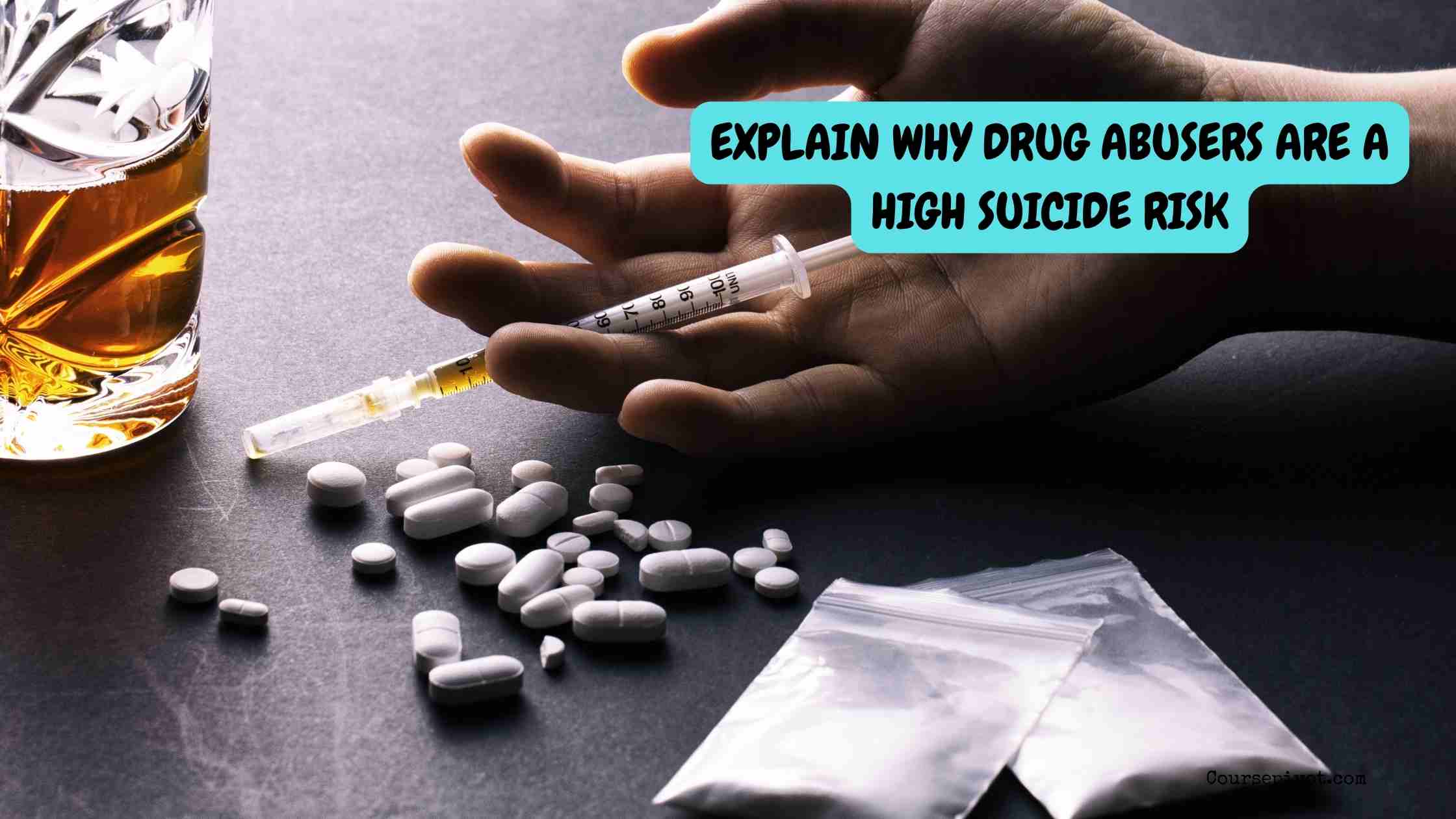
Why Drug Abusers Are a High Suicide Risk
Drug abuse significantly increases the likelihood of suicidal thoughts and behaviors, creating a serious public health concern. I’ve been struck by how substance use can spiral into despair, amplifying mental health struggles. Understanding why drug abusers are a high suicide risk sheds light on the urgent need for intervention and support. In this article, I’ll explain five key reasons why drug abuse heightens suicide risk, based on my research and insights into mental health and addiction as of May 2025. These factors reveal the dangerous interplay between drugs and suicidality. Let’s dive into why drug abuse and suicide are linked and what it means for prevention.
Table of Contents
Ever wondered why drug use often leads to such dark outcomes? The connection to suicide is chilling. Ready to explore five reasons drug abusers face high suicide risk?
Substance abuse traps people in a cycle of pain. I’ve seen how it erodes hope, pushing some to the edge. Let’s uncover why drug abusers are so vulnerable.
1. Worsened Mental Health Disorders
Drug abuse often exacerbates underlying mental health conditions like depression or anxiety, which are strongly linked to suicide. This is a primary reason drug abusers are at high risk. I’ve read about how drugs amplify emotional distress.
- Mechanism. Substances like alcohol or opioids disrupt brain chemistry, worsening symptoms in 60% of users with mental disorders, per NIMH 2025.
- Stats. 50% of suicide deaths involve mental health issues; drug users with depression are 3x more likely to attempt suicide, per CDC 2024.
- Impact. Untreated conditions spiral, with 30% of abusers developing suicidal ideation, per SAMHSA.
Why it matters? Drugs deepen mental health crises, pushing users toward despair.
2. Impaired Judgment and Impulsivity
Drugs impair cognitive function, leading to reckless decisions, including suicide attempts. This factor in suicide risk makes dangerous moments deadlier. I’ve been alarmed by how substances cloud rational thinking.
- Effect. Alcohol and stimulants reduce impulse control, with 40% of suicide attempts occurring during intoxication, per 2024 JAMA Psychiatry.
- Examples. Opioid users are 2x more likely to act impulsively on suicidal thoughts, per NIH.
- Consequences. Impaired judgment turns fleeting thoughts into fatal actions.
Why it’s critical? Drugs lower barriers to acting on suicidal impulses.
3. Social Isolation and Relationship Strain
Drug abuse often alienates users from family and friends, fostering loneliness that fuels suicidal thoughts. This reason for high suicide risk cuts off vital support. I’ve seen how addiction fractures connections.
- Impact. 70% of chronic drug users report strained relationships, with 50% feeling isolated, per SAMHSA 2025.
- Link to suicide. Isolation increases suicide risk by 4x, with 25% of abusers citing loneliness as a trigger, per CDC.
- Cycle. Rejection drives further drug use, deepening despair.
Why it matters? Losing support networks leaves users vulnerable to suicide.
4. Physical Health Deterioration
Chronic drug use damages the body, leading to pain and hopelessness that heighten suicide risk. This connection to suicidality ties physical and mental tolls. I’ve been shocked by how health decline fuels desperation.
- Examples. Opioid abuse causes chronic pain in 30% of users; liver damage from alcohol affects 20%, per NIH 2024.
- Impact. Poor health doubles suicide risk, with 15% of users citing physical suffering, per 2025 studies.
- Despair. Feeling trapped in a failing body pushes 10% of abusers to suicidal thoughts, per CDC.
Why it’s serious? Physical decline amplifies feelings of worthlessness.
5. Addiction’s Hopelessness Cycle
The relentless cycle of addiction—cravings, use, and guilt—creates a sense of entrapment, driving suicidal ideation. This reason drug abusers are at risk reflects addiction’s psychological toll. I’ve been moved by stories of users feeling stuck.
- Mechanism. Addiction hijacks reward systems, reducing hope; 40% of users feel life is meaningless, per NIDA 2025.
- Stats. Substance use disorders increase suicide attempts by 6x, with 20% of addicts attempting, per 2024 data.
- Breaking point. Repeated relapses lead 15% to see suicide as an escape, per SAMHSA.
Why it matters? Addiction’s grip fosters a belief that life can’t improve.
Read our blog on Define and Describe the Different Types of Risk Factors
What’s Next for You
Understanding why drug abusers are a high suicide risk is like shining a light on a crisis that demands action. I’ve been struck by how these five reasons—worsened mental health, impaired judgment, isolation, physical decline, and addiction’s hopelessness—create a perfect storm for suicidality. With 22% of U.S. suicides in 2024 linked to substance abuse, per CDC, the issue is urgent. Ignoring it risks lives; addressing it saves them. Will you overlook this connection, or help those in need?
Here’s how to act:
- Seek help. If you or someone struggles, call 988 or SAMHSA’s helpline (1-800-662-HELP).
- Educate. Share facts about addiction and suicide with friends or family.
- Support recovery. Encourage treatment programs, which reduce suicide risk by 50%, per NIH.
Drug abuse and suicide are intertwined tragedies. Why it matters is about saving lives. Start today to support prevention and hope.
Cite this article
You can copy and paste your preferred citation format below.
Martin, L. & Arquette, E.. (2025, May 31). Why Drug Abusers Are a High Suicide Risk. Coursepivot.com. https://coursepivot.com/blog/briefly-explain-why-drug-abusers-are-a-high-suicide-risk/



